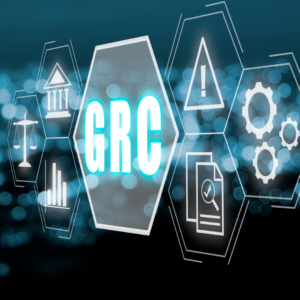
R. Shawn Elliott
President and LLC Manager IPKeys Technologies, LLC | Chickasaw Nation Industries (CNI)
Cybersecurity budgeting is rarely straightforward, since threats evolve faster than procurement cycles. That’s why Rough Order of Magnitude (ROM) estimates are so valuable. Whether you’re managing FedRAMP authorizations or preparing for next year’s funding cycle, a solid ROM gives you a fast, flexible way to estimate project costs and move things forward.
But the definition of what makes a “good” ROM is changing.
OMB Memo M-24-15 tightens the screws on Rough Order of Magnitude (ROM) estimates. It’s no longer enough to say, “This will probably cost X.” Agencies are now expected to provide more defensible, data-backed forecasts, particularly when seeking Technology Modernization Fund (TMF) investments.
That’s why I’m walking you through:
- What a ROM is (and isn’t)
- What makes a cybersecurity ROM effective
- How ROMs have changed in light of OMB Memo M-24-15
- What to include in your estimate in light of the changes
Let’s get started.
Why ROMs Matter for Federal Cybersecurity Projects
Federal cybersecurity executives aren’t just buying software anymore. You’re building multi-year strategies. You’re responding to breaches, evolving threats, and compliance shifts (all in the same quarter). That’s a lot to plan for. And it’s why ROMs are so essential.
A Rough Order of Magnitude (ROM) provides a flexible, high-level estimate to guide early decisions before the technical details are finalized. It helps teams move faster, anticipate procurement cycles, and align stakeholders around a shared understanding of scope and investment.
An adequate ROM helps you:
- Respond to threats quickly (without waiting for lengthy procurement cycles)
- Avoid underestimating hidden costs like documentation or training
- Prepare leadership for the true size and shape of a security initiative
- Prevent downstream delays, scope creep, or budget blowouts
But that’s not all you need to know about a rough order of magnitude definition.
How Cybersecurity ROMs Are Evolving Under M-24-15
The Office of Management and Budget (OBM) released Memo M-24-15 in July 2024, introducing sweeping updates to the FedRAMP program.
While this memo doesn’t directly change the rough order of magnitude meaning, it marks a broader shift in how the federal government wants agencies to approach cloud security. If you’re building a ROM today, you’re no longer just estimating the cost of tools or documentation.
You’re planning for:
- Continuous Authorization (CA)
- Automated, machine-readable compliance workflows
- Threat-informed, adaptive security models
- Shared infrastructure and cross-agency reuse
In other words, ROMs must reflect how security is delivered and maintained. Not just how it’s deployed. How does this shift affect the ROM process?
Key Considerations for Building a ROM Under M-24-15
Most ROMs start the same way. You’re asked, “Roughly how much is this going to cost us?” And you’re thinking, “Well… that depends.”
Whether you’re mapping out a zero-trust initiative or responding to evolving guidance from OMB Memo M-24-15, your ROM needs to offer structure, even when complete certainty isn’t possible.
Here’s how the process takes shape:
1. Initial Security Assessment Costs
Every ROM begins with a ballpark figure. You might only have a rough idea of system boundaries, user groups, or risk posture. That’s okay. The goal is to define the problem space and set an initial cost range to guide early decisions.
At this early stage, you can reliably plan for one cost: your initial security assessment. Many agencies partner with specialized contractors (like IPKeys). Where do we earn our keep? After we map out your current threat landscape, you can design your ROM around actual security priorities. That makes your estimate far more credible on day one.
But under M-24-15, the expectations are higher.
“FedRAMP must also focus its attention and engagement with industry on security controls that lead to the greatest reduction of risk to Federal information and agency missions, grounding them in security expertise and real-world threat assessment.”
—OMB M-24-15, Section I
In plain English, your ROM should present the risks and how you’ll keep tracking them over time. That means budgeting for early audits and the systems that let you see and respond to threats as they change. (We can help with that, too.)
2. Federal Compliance Documentation and Audit Support
Federal compliance isn’t just about implementing security measures. It’s about proving you’ve done it correctly. Traditionally, ROMs included costs for documentation specialists, audit prep, and manual workflows, like writing ATO packages, system security plans, and compliance reports.
But not anymore.
“FedRAMP processes should be automated wherever possible… GSA must establish a means of automating FedRAMP security assessments and reviews.”
—OMB M-24-15, Section V
M-24-15 moves compliance into the age of digitalization and data automation. Today, your ROM must include expenses for:
- GRC tools that produce machine-readable artifacts (e.g., OSCAL)
- Integration with FedRAMP APIs for auto-submission
- Ongoing platform maintenance and audit automation
What used to be paperwork is now a live compliance system. If your ROM doesn’t reflect that shift, it risks underestimating the cost of staying compliant in a continuous authorization environment.
3. Account for Integration challenges
Integrating modern security tools into legacy federal systems is still a challenge—and still a key ROM cost driver. What’s changed under M-24-15 is how agencies are expected to approach that challenge.
“FedRAMP should not incentivize or require commercial cloud providers to create separate, dedicated offerings for Federal use… The Federal Government benefits from the investment, security maintenance, and rapid feature development that commercial cloud providers give to their core products.”
—OMB M-24-15, Section II
In plain English: Stop reinventing the wheel. Agencies should integrate secure, commercial cloud solutions as they are—not demand custom federal versions. Your ROM should reflect that shift by prioritizing standard APIs, shared services, and reusable architectures that speed up deployment and reduce complexity.
4. Include Personnel and Training Costs
Consider the rough order of magnitude example of one federal agency that budgeted flawlessly for cutting-edge security tools and then forgot to fund training. Six months in, they had a state-of-the-art system… that no one could use properly. It’s a common mistake. ROMs often underestimate labor and training costs.
Start by budgeting for the roles you’ll need to design, implement, and sustain your security posture. That means breaking out the key cost areas tied to people, tools, and skills:
- Labor Costs: Estimate the level of effort (hours and rates) for core roles like security engineers, analysts, and project managers. Be sure to include internal staff and any cleared contractors supporting the effort
- Technology Costs: Account for the tools your team will use daily—firewalls, IDS/IPS platforms, encryption tools, endpoint monitoring, and any licensing or subscriptions tied to your security controls
- Training Costs: Include funding for security awareness programs across your agency, along with advanced training and certifications for technical staff to stay current on evolving practices (e.g., OSCAL, Continuous Authorization, and DevSecOps workflows)
- Compliance Costs: Don’t forget staff time and resources tied to documentation, ATO upkeep, and internal assessments that support NIST and FedRAMP requirements
- Contingency Costs: Build in a buffer based on risk analysis. Whether it’s a sudden breach, regulatory shift, or staffing gap, your ROM should include a contingency budget to handle unexpected costs without disrupting operations
Under OMB M-24-15, many of these roles and responsibilities now involve automation, interoperability, and real-time responsiveness:
“Agencies must ensure that their governance, risk, and compliance (GRC) tools and system-inventory tools can ingest and produce machine-readable authorization artifacts using OSCAL.”
—OMB M-24-15, Section IX
In short, this isn’t administrative overhead. It’s core infrastructure. Your ROM should reflect that by funding not just the human effort but the tools, integrations, and automation needed to keep your compliance posture agile, accurate, and defensible.
5. Emergency Response and Recovery Planning
Your ROM can’t just plan for the ideal scenario. It needs to account for when things go sideways. Agencies with well-rehearsed response plans don’t just bounce back faster; they avoid the massive costs of uncontained breaches.
Under OMB Memo M-24-15, this kind of readiness is no longer optional.
“FedRAMP must ensure CSP incident response resilience through procedures, communication and reporting timelines… that help to protect Federal systems and information from potential attacks on cloud-based infrastructure.”
—OMB M-24-15, Section VI
What’s changed? M-24-15 formalizes incident response as a continuous, built-in capability. Your ROM needs to show how you’ll maintain constant readiness, not just respond when something breaks.
That means:
- Always-on IR capability, not just annual tabletop exercises
- CISA directive and alert integration baked into your response infrastructure
- Surge staffing and after-hours support are included in your labor planning
Bottom line: response capability is now a baseline ROM element.
6. Security Monitoring and Threat Detection Infrastructure
FISMA already requires continuous security monitoring. That’s not new. It’s what drives your need for infrastructure like SIEM systems, log management tools and analytics platforms.
With OMB Memo M-24-15, this infrastructure isn’t just mandatory. It’s mission-critical.
“FedRAMP’s continuous monitoring processes should incentivize security through agility and enable Federal agencies to use the most current and innovative cloud computing products and services possible.”
— OMB M-24-15, Section VI
This means Rough Order of Magnitude (ROM) estimates must now include:
- Real-time alerting and telemetry platforms
- SIEM systems with automated FedRAMP reporting
- Long-term log storage compliant with retention standards
- Tools that support a live feedback loop, not just passive log collection
Continuous monitoring is no longer just about logging. It’s about live, responsive infrastructure that enables real-time decision-making.
7. Long-term Operations and Sustainability Planning
Your ROM can’t stop at year one. It must cover the full lifecycle of your cybersecurity program (typically three years or more). That includes recurring costs like system updates, patching, security reassessments, and ongoing compliance checks.
You’ll also need to account for inflation-adjusted licensing and maintenance fees, plus the growing complexity of threat landscapes and the tools required to counter them.
And there’s a bigger shift on the horizon:
“The FedRAMP PMO will explore the use of Artificial Intelligence (AI) in the FedRAMP security assessment review and continuous monitoring processes… to improve security outcomes and scalability.”
— OMB M-24-15, Section V
What does this mean for your ROM? You’ll need to build in flexibility—so your systems can evolve as FedRAMP moves toward AI-driven reviews, automation-first processes, and real-time scalability.
Plan for:
- AI-enhanced compliance tools that reduce manual workloads
- Cost savings from automation, but also the upfront investment to get there
- Ongoing funding for infrastructure that adapts to new standards, threats, and tech capabilities
This isn’t a one-and-done exercise. Sustainability is now part of your security posture. And your ROM needs to show how you’ll keep up.
How to Refine Your ROM in Light of OMB Memo M-24-15
OMB Memo M-24-15 sets a higher standard for what qualifies as a credible ROM. It’s no longer enough to estimate costs loosely or rely on past templates. Your ROM must clearly show how your cybersecurity plan aligns with evolving federal expectations, especially around automation, integration, and continuous compliance.
Here’s what your ROM now needs to include—and why:
- Initial Security Assessment: Start with a threat-informed baseline. Budget for contractor support to conduct audits, asset inventories, and attack surface mapping. This foundational work shapes every other cost that follows.
- Compliance Infrastructure: Manual spreadsheets won’t cut it. Your ROM should fund OSCAL-based GRC tools, FedRAMP-integrated workflows, and systems that support continuous monitoring and machine-readable artifacts.
- System Integration Costs: Budget for adapting commercial cloud platforms using shared services, FedRAMP-authorized APIs, and standard tooling. Avoid custom-builds unless absolutely necessary (M-24-15 favors reuse and interoperability).
- Labor and Training: Detail the internal and contractor roles needed to design, implement, and maintain your posture. Include tooling and training costs tied to Continuous Authorization, OSCAL, and DevSecOps practices. Upskilling is part of the cost of compliance.
- Incident Response Readiness: Don’t just fund response plans: fund readiness. Budget for red teaming, tabletop exercises, surge support, and integration with CISA directive systems. The response is now a baseline, not a contingency.
- Threat Monitoring and Telemetry: Real-time visibility is the new normal. Your ROM should include SIEM platforms, alerting tools, telemetry dashboards, and long-term log storage that meets retention requirements.
- Sustainability Over 3+ Years: Security isn’t static. Build in recurring costs for patching, reassessments, licensing, and infrastructure upgrades. As AI becomes more embedded in FedRAMP reviews, plan for tools that can adapt to automation-driven oversight.
- Contingency Planning: M-24-15 expects your ROM to be adaptive. That means including flexible funding for emerging threats, staffing changes, or regulatory shifts. Risk buffers aren’t optional anymore—they’re part of the plan.
Essential ROM Resources for Federal Agencies
Before building your ROM, review these key NIST frameworks:
- NIST SP 800-37: Your guide to risk management framework implementation
- NIST SP 800-53: Security controls (user-friendly breakdown available)
- NIST SP 800-30: Risk assessment methodology
- NIST SP 800-161 Critical for supply chain security considerations
Simplifying ROM for Federal Cybersecurity Planning
OMB Memo M-24-15 ups the ante on what a cybersecurity ROM must deliver: demanding automation, continuous monitoring, and machine-readable compliance
IPKeys CLaaS® was built to meet that challenge. Here’s how it helps:
- Automates Compliance Tasks: CLaaS® supports OSCAL-based reporting, reducing manual effort and aligning with FedRAMP’s push for automation
- Visualises Risk Clearly: Built-in analytics turn RMF data into actionable, defensible insights essential for building credible ROMs
- Streamlines Monitoring & POA&Ms: Supports continuous visibility and tracks remediation in real-time, as required under M-24-15
- Supports Integration & Reuse: Works with standard APIs and shared platforms, so your ROM reflects scalable, interoperable security
Think of CLaaS® as your ROM co-pilot designed for the new rules, ready to deliver cost estimates that hold up under scrutiny. With extensive DoD experience, we understand the unique challenges of federal cybersecurity planning. When you’re ready to build more defensible estimates, contact us for the support you need.
Frequently Asked Questions
1. What is a Rough Order of Magnitude (ROM) estimate in cybersecurity?
A ROM is a high-level, early-stage cost estimate to guide planning before finalizing technical details. It helps agencies scope out investments, avoid delays, and align stakeholders—especially under tight timelines.
2. Why does OMB Memo M-24-15 affect how I build ROMs?
M-24-15 introduces stricter expectations around continuous monitoring, automation, and machine-readable compliance. ROMs must now reflect real-time infrastructure, adaptive security planning, and readiness for Continuous Authorization.
3. How detailed does my ROM need to be under M-24-15?
Your ROM doesn’t need exact numbers, but it must be defensible. That means data-backed assumptions, risk-based contingencies, and clear plans for automation, integration, training, and compliance tooling.
4. Can I still use spreadsheets to build my ROM?
Not effectively. Manual spreadsheets don’t support OSCAL-based outputs or continuous monitoring workflows. Agencies are expected to use GRC tools that align with FedRAMP APIs and automation mandates.
5. What happens if I under-budget for automation or compliance?
You risk project delays, funding pushback, and falling short of FedRAMP and NIST standards. Worse, you could fail to meet TMF funding requirements. M-24-15 assumes agencies are planning with modern, scalable infrastructure in mind.
6. How can IPKeys help with ROM development?
Our CLaaS® platform automates compliance tasks, tracks threats in real-time, and translates technical requirements into budget-ready estimates that align with M-24-15. We help you build ROMs that are realistic—and ready.
Stay ahead of federal cybersecurity challenges.
Subscribe to our Mission Assurance newsletter, trusted by 1,700+ federal cybersecurity professionals.



